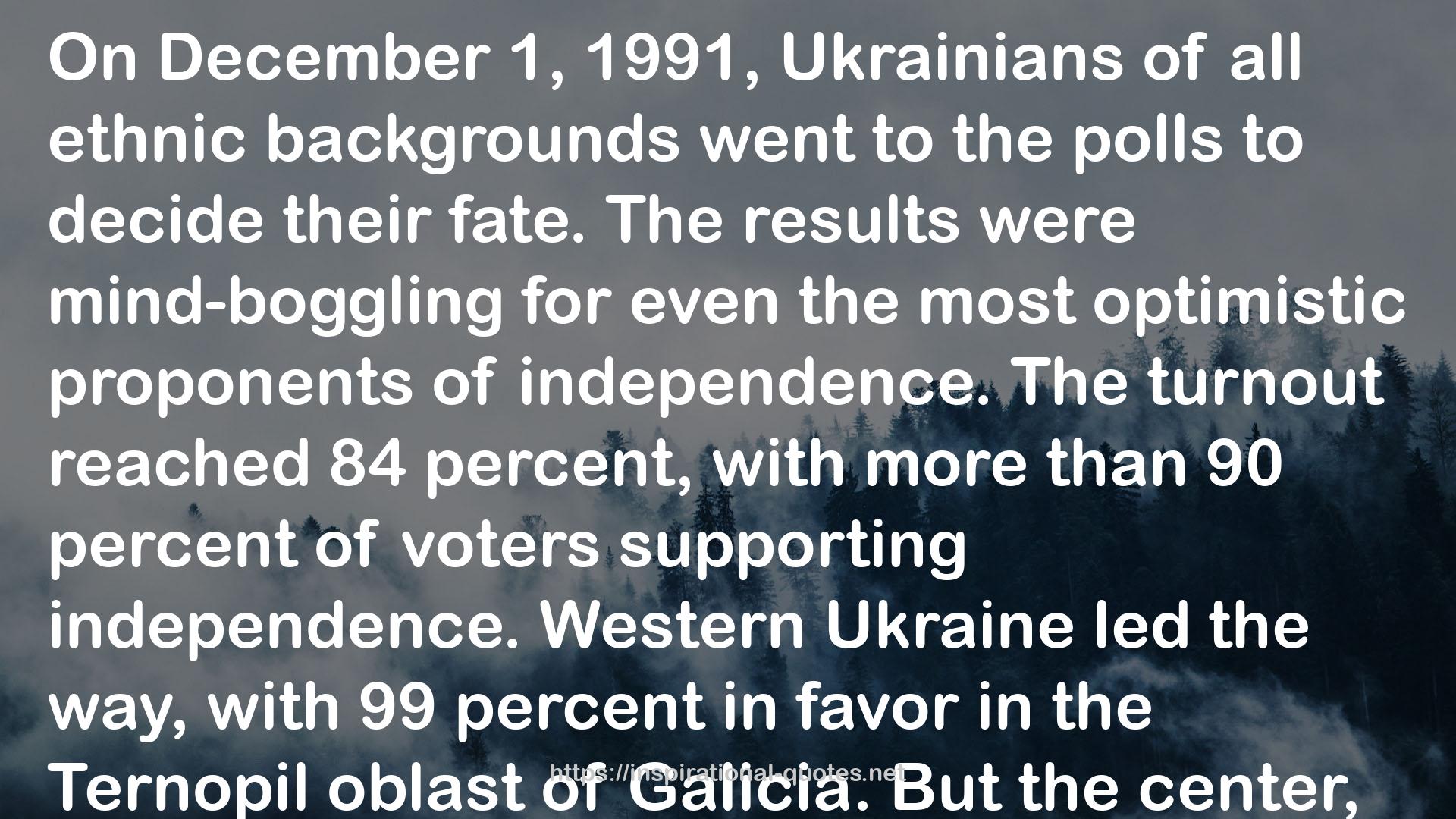" On December 1, 1991, Ukrainians of all ethnic backgrounds went to the polls to decide their fate. The results were mind-boggling for even the most optimistic proponents of independence. The turnout reached 84 percent, with more than 90 percent of voters supporting independence. Western Ukraine led the way, with 99 percent in favor in the Ternopil oblast of Galicia. But the center, south, and even the east were not far behind. In Vinnytsia, in central Ukraine, 95 percent voted for independence; in Odesa, in the south, 85 percent; and in the Donetsk region, in the east, 83 percent. Even in the Crimea, more than half the voters supported independence: 57 percent in Sevastopol and 54 percent in the peninsula as a whole. (At that time, Russians constituted 66 percent of the Crimean population, Ukrainians 25 percent, and the Crimean Tatars, who had just begun to return to their ancestral homeland, only 1.5 percent.) In the center and east of the country, many voted for independence while supporting Leonid Kravchuk’s bid for the presidency. He won 61 percent of the popular vote, obtaining a majority in all regions of Ukraine except Galicia. There, victory went to the longtime Gulag prisoner and head of the Lviv regional administration Viacheslav Chornovil. Ukraine voted for independence and entrusted its future to a presidential candidate who, many believed, could strike a balance between Ukraine’s various regions and nationalities, as well as between the republic’s communist past and its independent future. "
― Serhii Plokhy , The Gates of Europe: A History of Ukraine
